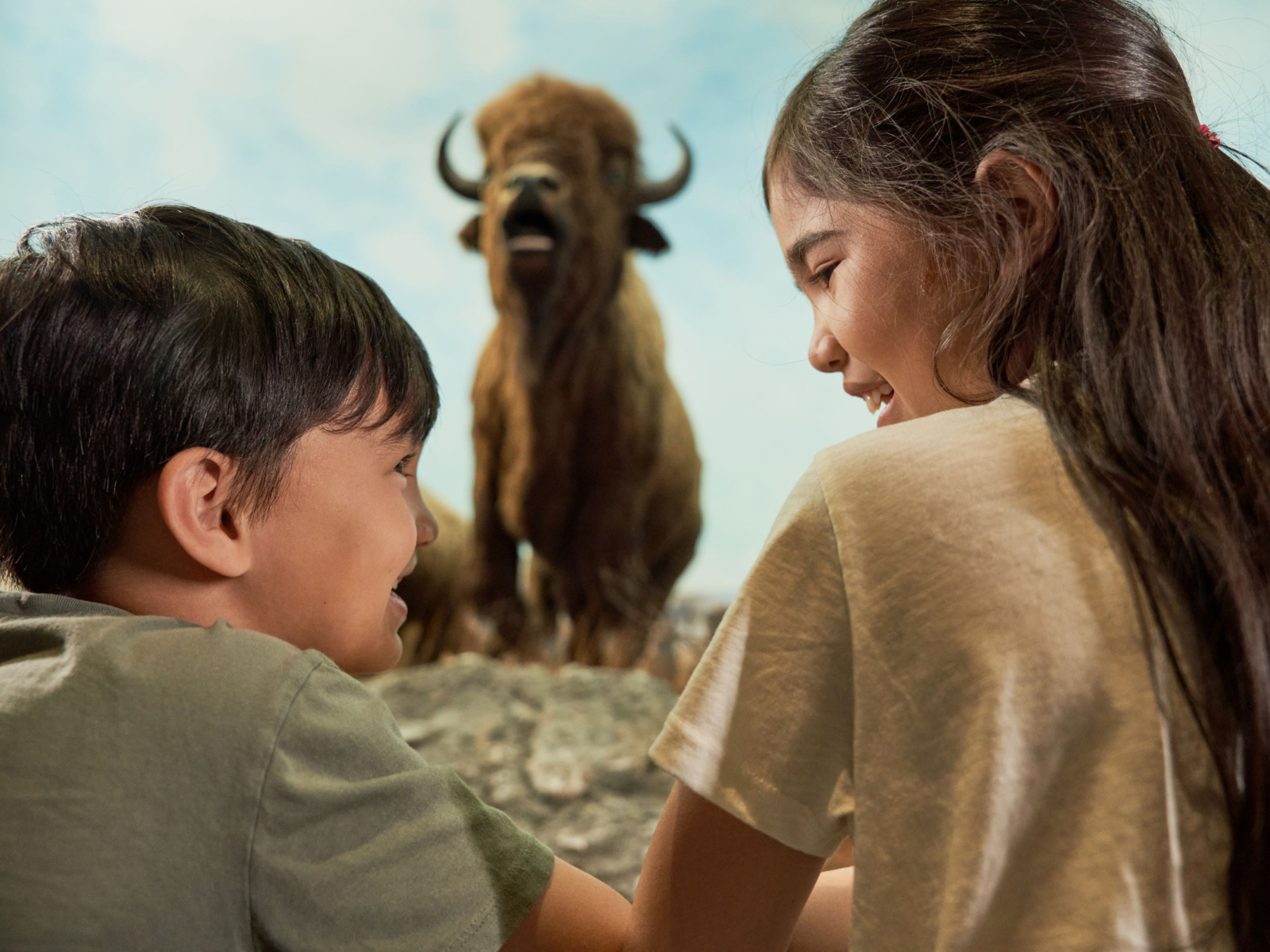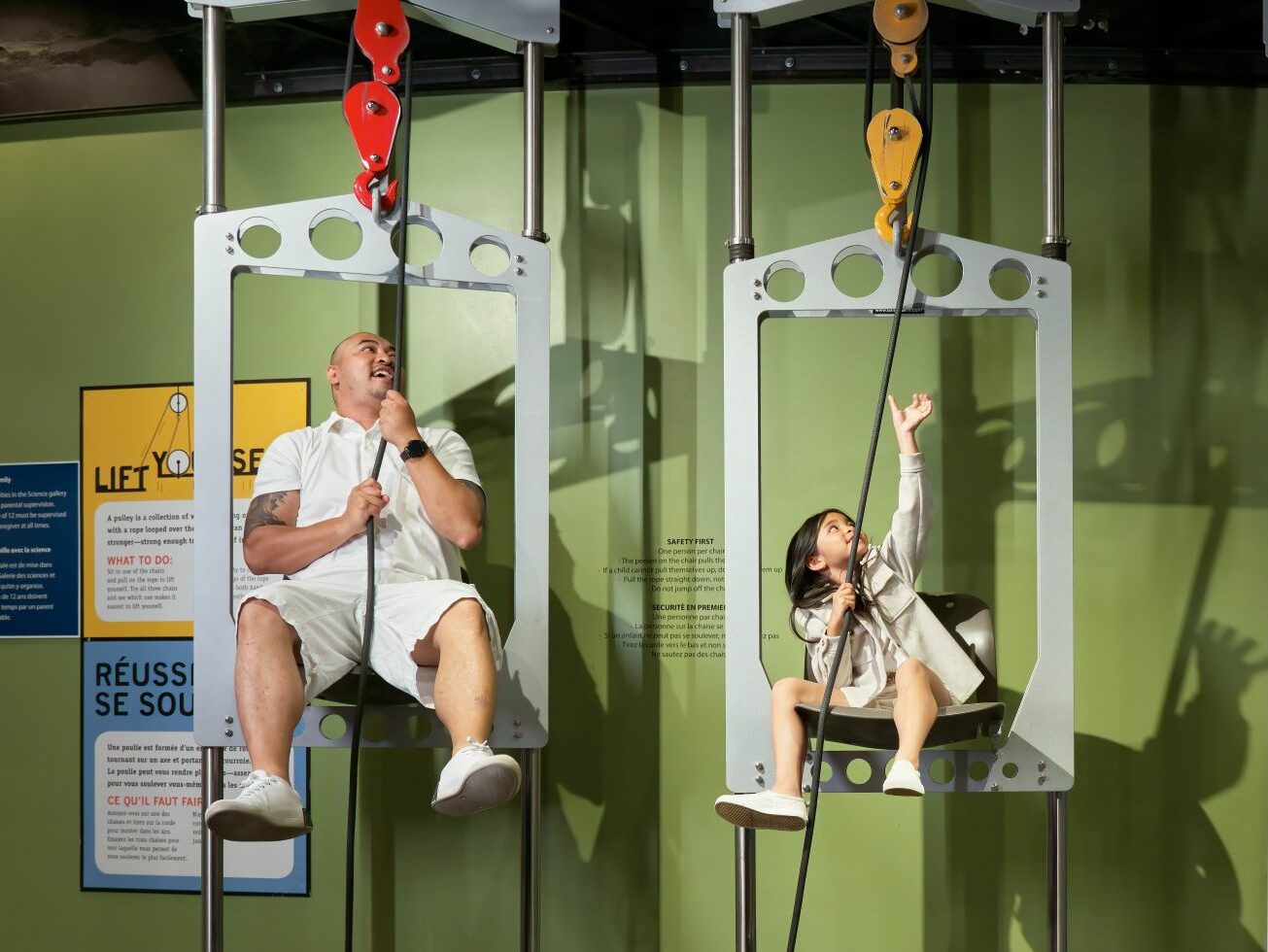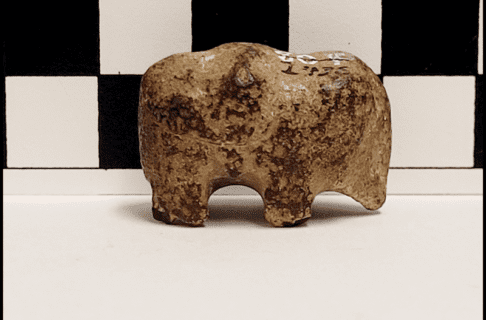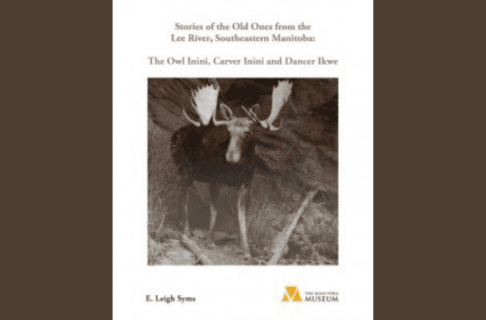Posted on: Monday September 26, 2011
By Kevin Brownlee, past Curator of Archaeology
I woke up at 6:00 am to get a good start on the day. Grant was already up and we decided to get out to the spruce bog early to gather roots. We needed to gather 250 feet of roots to make 500 feet of finished split roots. The estimate was 5 feet of roots for each rib, 40 ribs require 200 feet and the seams to be sewn would require the other 50 feet.
The bog was relatively dry and the moss was like a thick mattress over the spruce roots. Digging spruce roots does not hurt the trees. The bog where we gathered the roots has been used by Grant for many years and the trees are very healthy. After a few hours we gathered 250 feet of roots and we headed back to Grant and Christy’s place to prepare the roots.
All photographs from this entry are the property of Kevin Brownlee (personal collection)
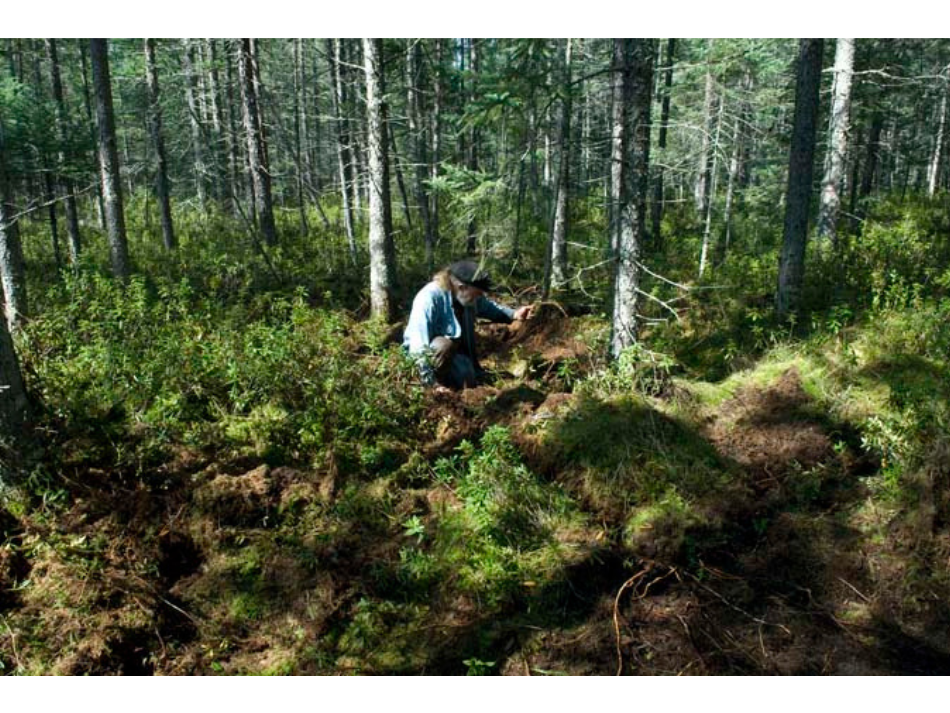
Grant digging roots.
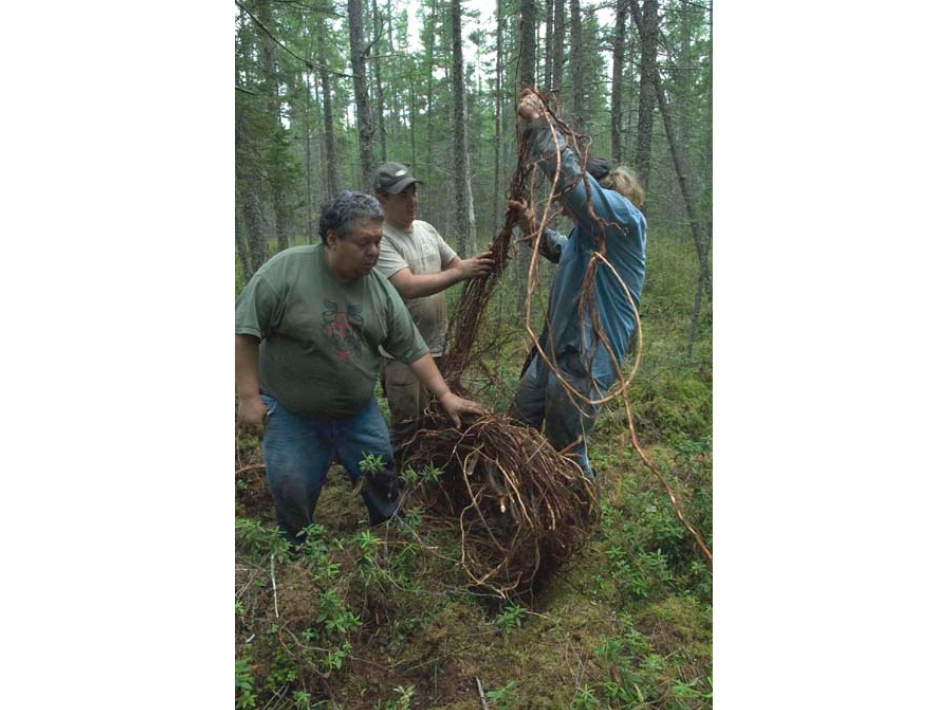
Grant Jim and Kevin rolling up 250 feet of roots.

Grant with full roll of roots 250 feet in length.
The roots were boiled to speed up the peeling process, once they boiled for an hour Myra and I began to peal and split the roots.

Kevin with pot of boiling spruce roots.
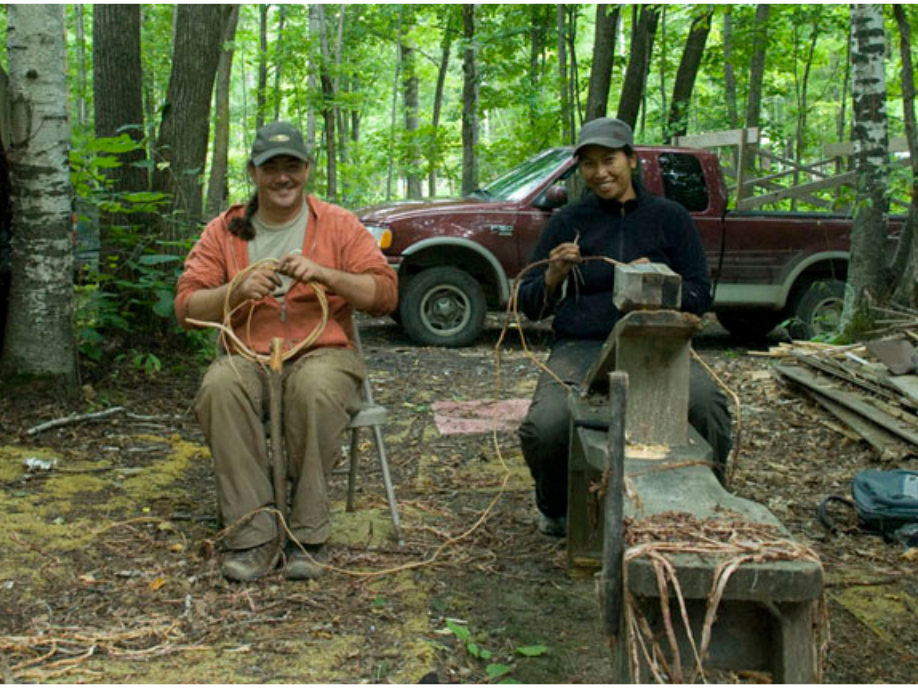
Kevin and Myra pealing spruce roots.
Jim and Grant made the building frame and started to prepare the bark. Only two sheets of birch bark were used to make the canoe. Once the sheets were cut to match each other and the building frame was placed over top weighted down with cinder blocks. The bark was cut from the outer edge to the building frame (called gores) to allow the bark to form fit the canoe shape. The bark was then folded up and held in place by wooden stakes.


Grant with canoe building frame on top of bark.

Pealed and split spruce roots ready for sewing.
We finished pealing the roots and splitting them before the end of the day and Grant started making the inner gunwales, outer gunwales and gunwale caps. While we made great progress on the canoe in one day of work it was far from looking like a canoe.
